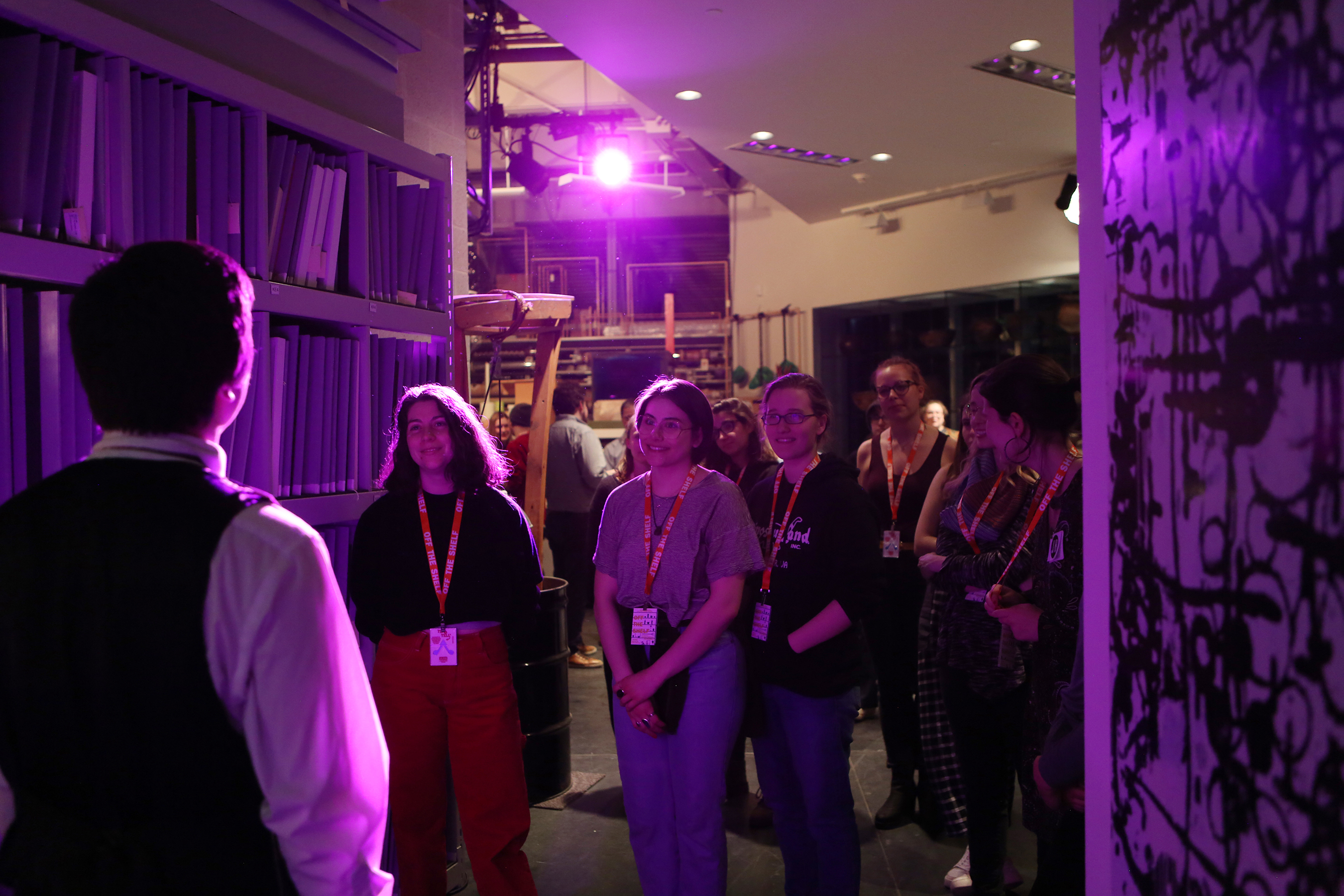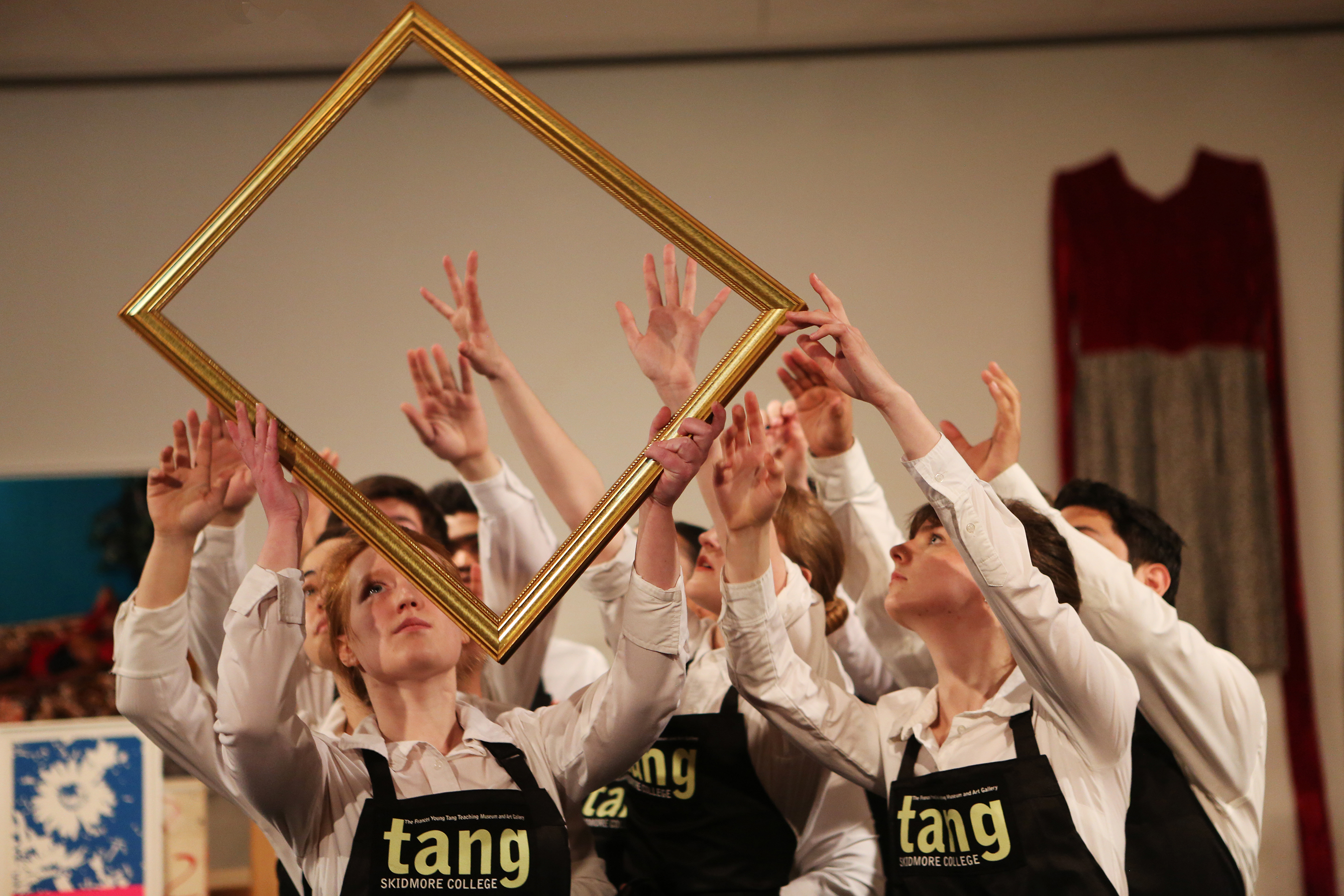
Photo: Sue Kessler
By Em Miller
The experience of Off the Shelf starts earlier than I was expecting. I am headed toward the Tang Museum from the main campus, not sure where I am supposed to enter, when I see the sign for the play in front of the north steps, directing the audience towards the back of the building. Following the sign and the matching orange arrows next to the sidewalks, I walk alongside the building, passing the stairs from the roof, the west entrance, and the outdoor sculptures. Even though it is dark by then, I find myself admiring the unique, striking architecture of the museum. Then I realize that the piece has already begun, in a way—as a play based off of the Tang, of course I was being made to notice the building as a whole. This feeling of a new perspective on the museum only intensifies as I am led around to the back and up to the loading dock, where audience members squeeze past a truck to reach a makeshift box office to receive our tickets (in the form of Tip-N-Tell cards on lanyards, which are commonly used in shipping delicate materials—such as art—to determine whether a crate has been tipped or badly jostled). We enter the space of the play, in the same way, as the Chief Curator (Julian Giovanni Schepis ’22) says, that much of the art of the Tang collections enters the museum: through the back.

Photo: Sue Kessler
This piece is not the first collaborative performance with the Tang that theater professors Carolyn Anderson and Garett Wilson have created, but it is in many ways the most ambitious and immersive. Previous collaborations have focused on single exhibitions, but this project exists as the culmination of their work with the museum, and has been devised in response to the Tang’s expansive permanent collection. In order to fully center and contextualize the art, the play travels through almost the entire building, bringing the performance even into areas normally exclusively occupied by museum staff.
One of these rarely seen spaces is the preparation room, which we are led to from the loading dock by crate-bearing actors portraying Tang staff. Although just being able to enter this room, crammed floor to ceiling with carefully wrapped art, is exciting in itself, the experience is more than simply a backstage tour of the museum. Cautious, curatorial respect for the collection is translated into a scene of actors unpacking and transporting objects with carefully choreographed movements, set to music intercut with recorded instructions on how to handle art. The atmospheric sound and lighting design (by August Sylvester ’20) transforms every room of the museum into one where a theatrical performance and its accompanying audience does not seem incongruous, and it highlights how the Tang’s structure and contents guide the entire experience.
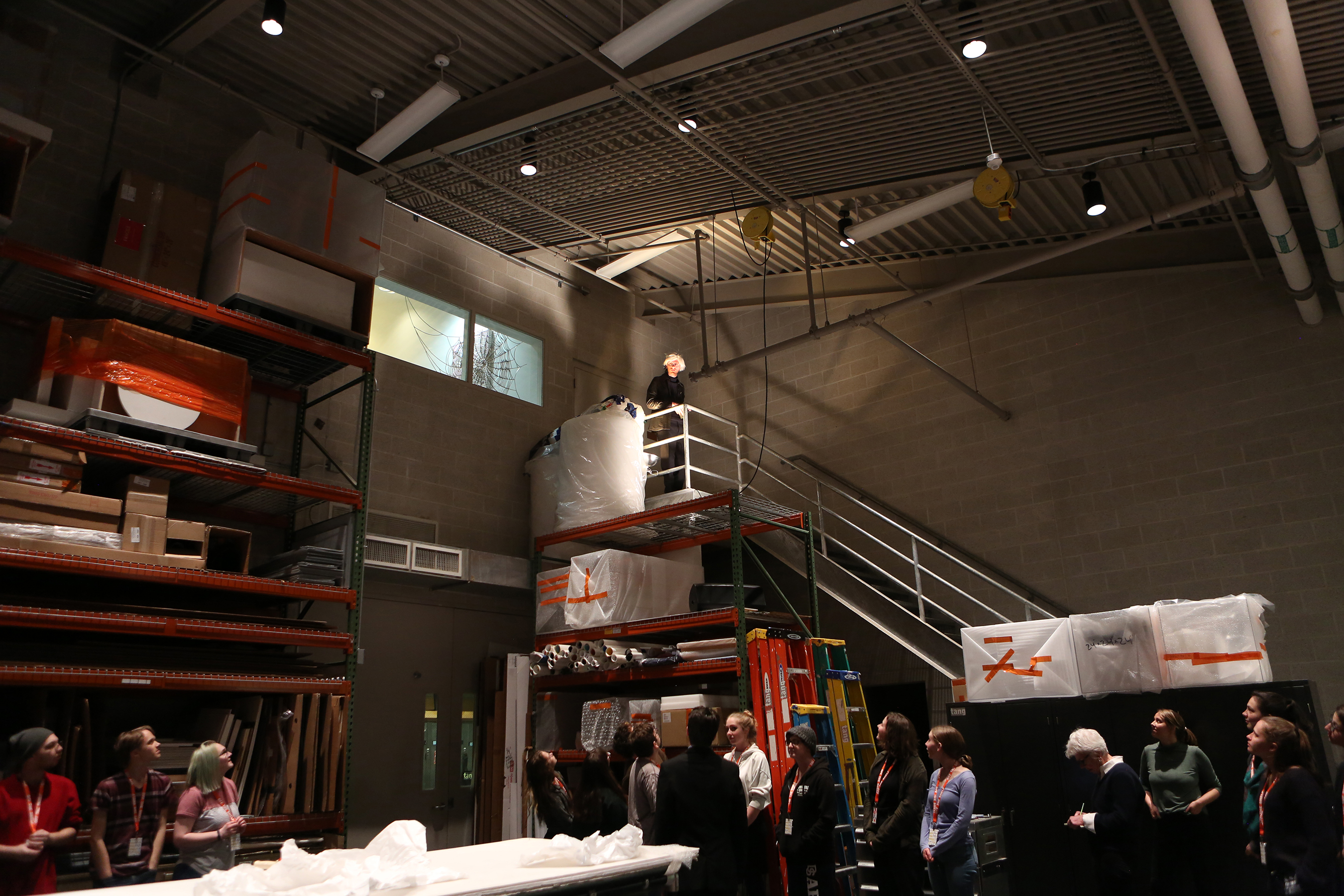
Photo: Sue Kessler
After a Polaroid-wielding Andy Warhol (Max LoSardo ’20) appears, we move onto the permanent collection room. On our way there, we pass two actors taking off the jumpsuits from the previous movement. The costume design (by Patty Pawliczak and JoLynn Dubois ’19) and hair design (by L. Esther Hibbs ’20), are another example of the strong dialogue between the production team and the Tang. The designers needed to work within existing museum rules about what kind of clothes can be safely worn while handling art, and so they designed their work to be both practical and expressive.
In the permanent collection, the art speaks. It is in this room where the play most fully articulates its central theme: the art of the Tang is not only the inspiration for Off the Shelf, but is an active participant in the piece, if not perhaps the main character. Here, audience members interact with, among others, a Nick Cave soundsuit, a portrait of Lucy Scribner (Finley Martin ’19), a donor of ancient Egyptian weapons (Ajani Acloque ’22), and the artist Candy Ass (Anthony Nikitopoulos ’21). For much of this movement, the audience experience is less focused and communal than it has been in the previous rooms. It is more akin to looking at an actual art exhibit; we are allowed to wander through the permanent collection room to engage with scattered vignettes representing various artists and artworks. Sylvester’s sound and lighting design became practical here as well—everything has to guide the audience’s attention when it comes time for us to focus on a single performance, or to move to the next and final room.
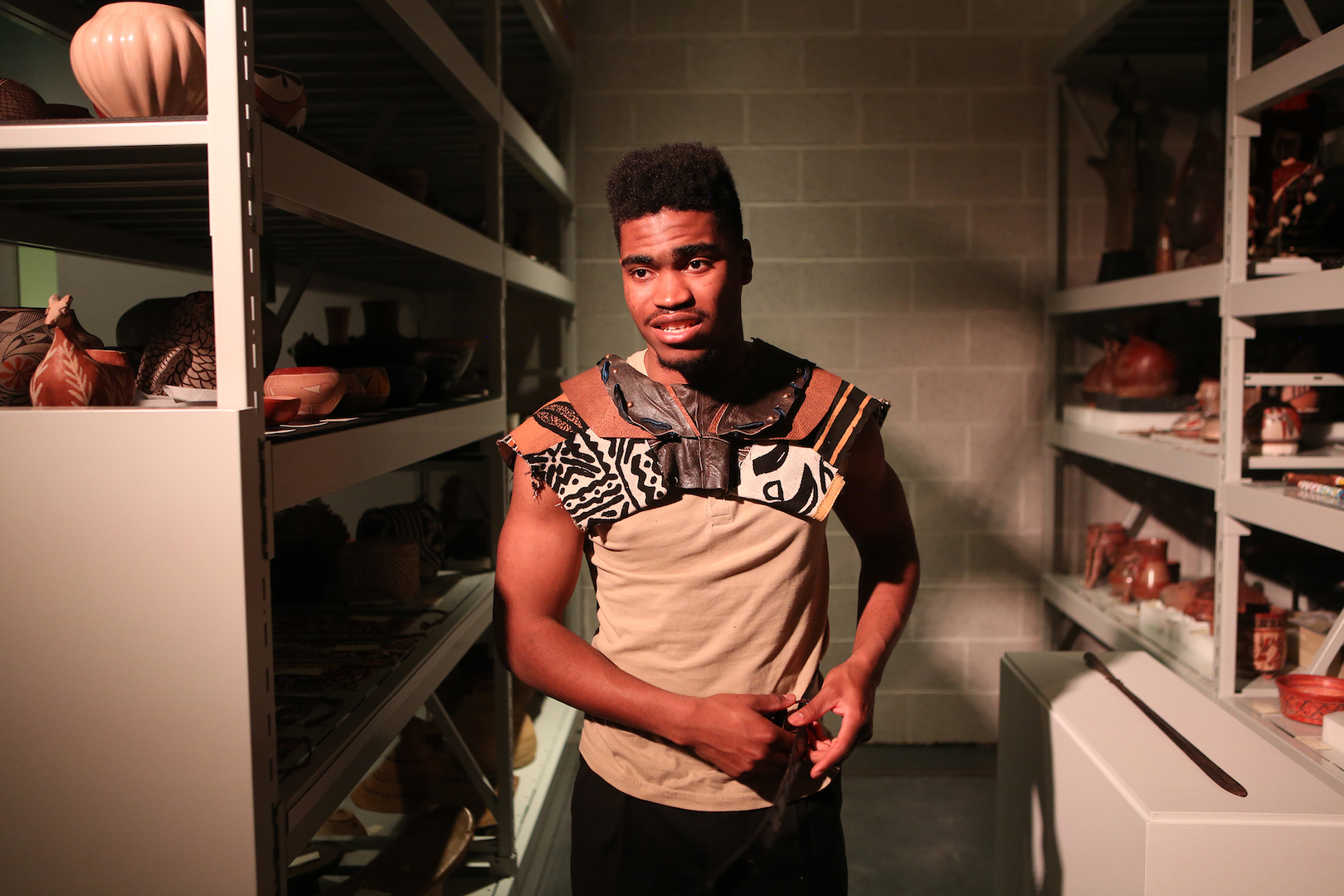
Photo: Sue Kessler
The climax of the piece takes place in the Payne Room. Here, the themes and design choices that already exist in the performance coalesce and resolve into a strong conclusion. Actors portraying curators and artists describe their relationships to the art collected in the room, such as Corita Kent’s (Miranda Coble ’19) powerful monologue about leaving the Catholic Church while making increasingly political art, much of which is in the Tang’s collection. The suggestions of dance-theater direction from earlier movements culminate in an ensemble dance. This dance answers the questions of what—and who—can be art and how to interact with art that arise with the first monologue by LoSardo as Warhol in the permanent collection room. The scene suggests a dichotomy between direct contact with art and the museum staff’s reverential caution towards the collection, but with the dance, the artist and curators both are unified as active creators.
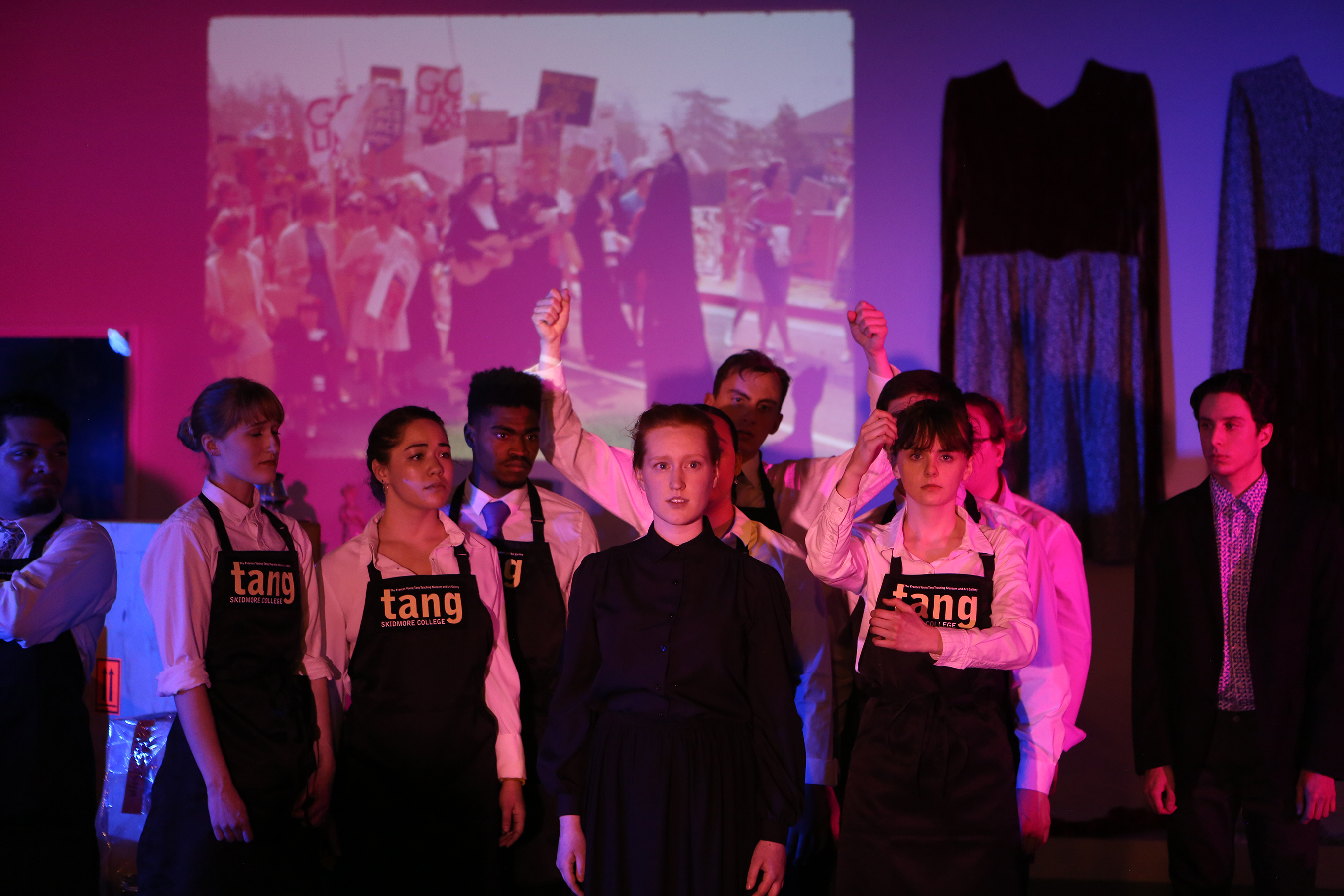
Photo: Sue Kessler
LoSardo’s Warhol sees himself as art, which corresponds neatly to other actors who personify various artists and artworks present. They bring to life the Tang Museum’s collections. They also represent a wide range of objects, from fine art to archaeological finds to examples of traditional crafts from widespread cultures, with most given equal significance in the performance. Portraying the collection in this way eliminates any perceived hierarchies of art, simply by means of giving so many different forms of art a voice in the piece.
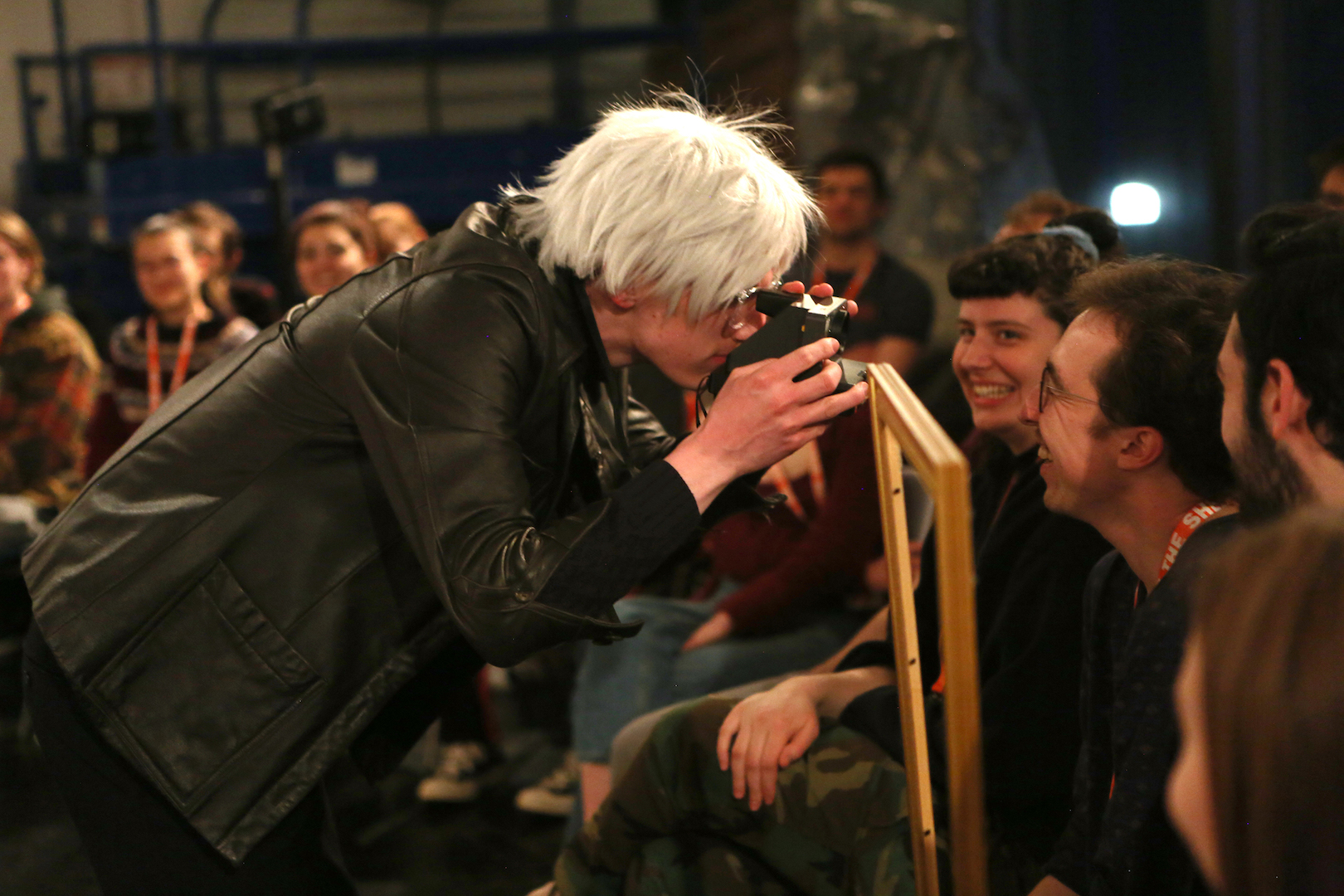
Photo: Sue Kessler
The chance to directly interact with the art, by way of the actors, builds the connection between the audience and the collections. Ultimately the production extends active engagement with the art and its curation, to us, by allowing the audience members to select one piece in the Payne Room to be added to The Shelf exhibit in the Winter Gallery, the very last location in the performance. That moment of collaboration between the audience and the piece is a fitting end to a play that was born out of strong and fruitful collaboration between members of the Skidmore Theater Department and the Tang Museum.
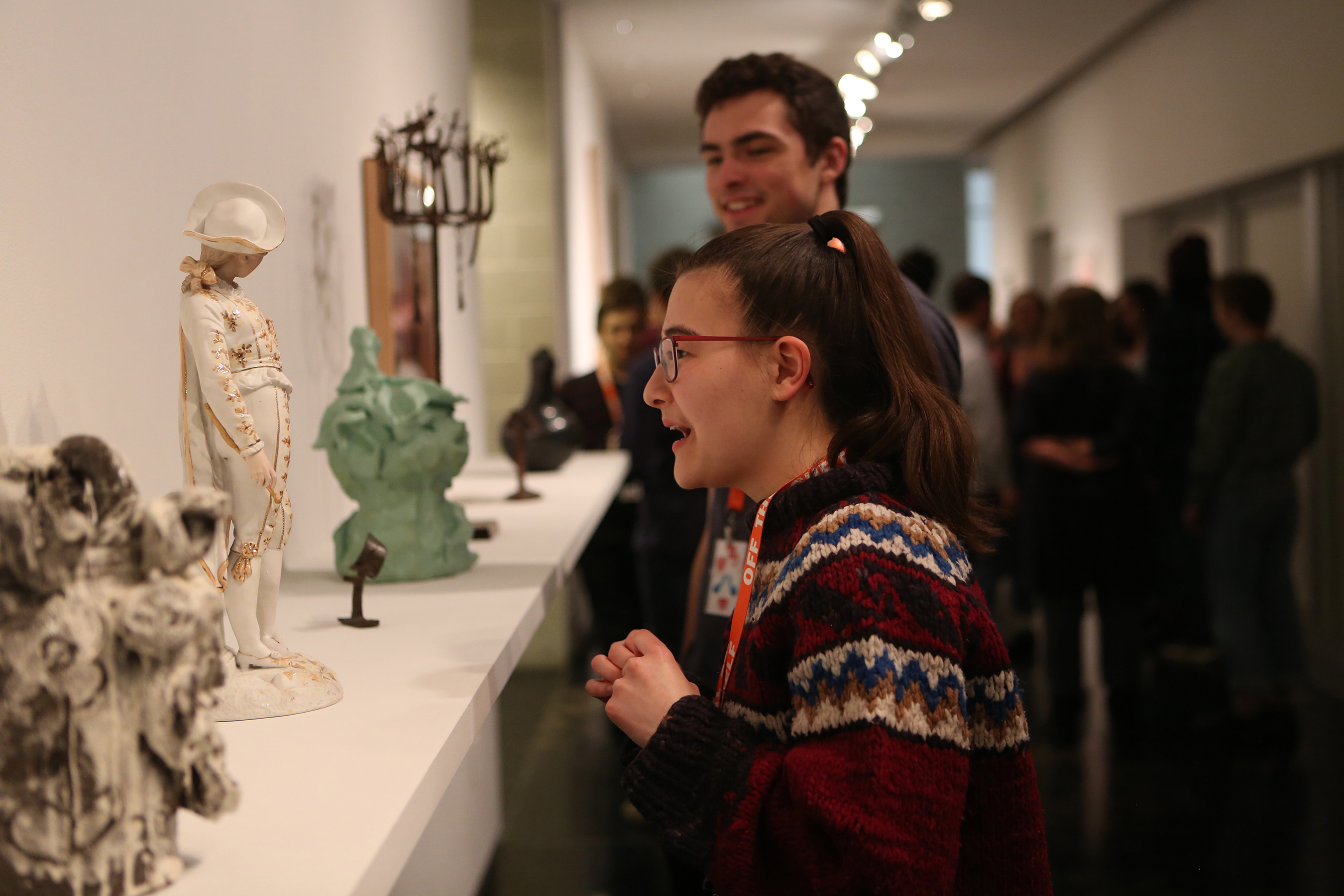
Photo: Sue Kessler
PHOTO GALLERY
PRODUCTION CREDITS
Co-created by Carolyn Anderson & Garett Wilson
Stage Managed by Taylor Jaskula ’21
Associate Director: Nick Leonard ’20
Production Designer: August Sylvester ’20
Costume Designer: Patty Pawliczak
Costume & Makeup Designer: JoLynn DuBois ’19
Hair Designer: L. Esther Hibbs ’20
Scenic & Props Assistants: Sarah Markley ’19 & Romi Moors ’19
Ensemble: Ajani Acloque ’22, Miranda Coble ’19, Rowen Halpin ’19, Max LoSardo ’20, Finley Martin ’19, Megan Muratore ’19, Anthony Nikitopoulos ’21, Sophia Paulino ’22, Fabian Rodriguez ’22, Julian Schepis ’22, Yael Schoenbaum ’21
Writing Collaborators: Nick Leonard ’20, Jacob Levine ’19, Natalie Lifson ’21, Eliza Martin ’21, Grace Palmer ’22, Nina Slowinski ’19, Ensemble
*
Em Miller is a junior STLN staff writer.

